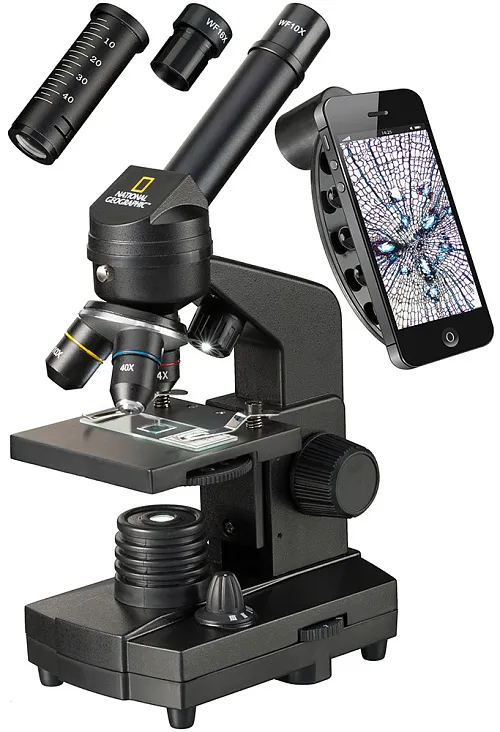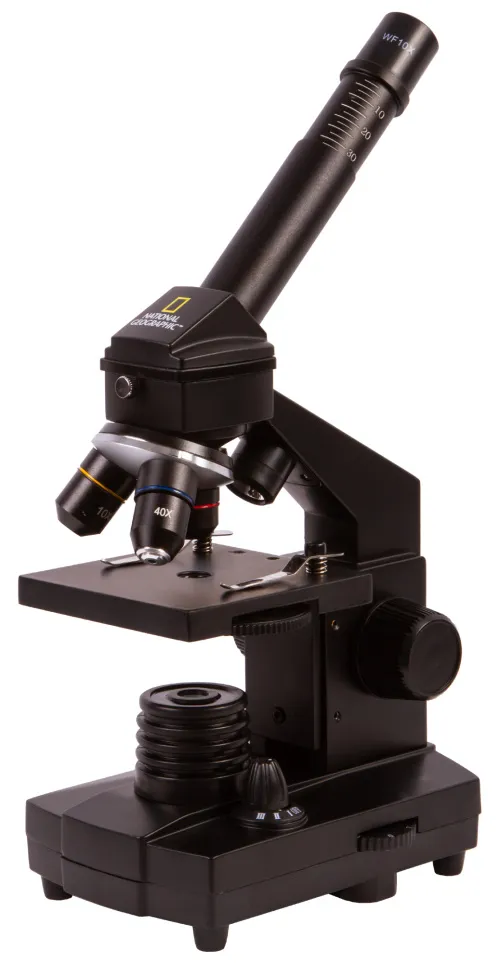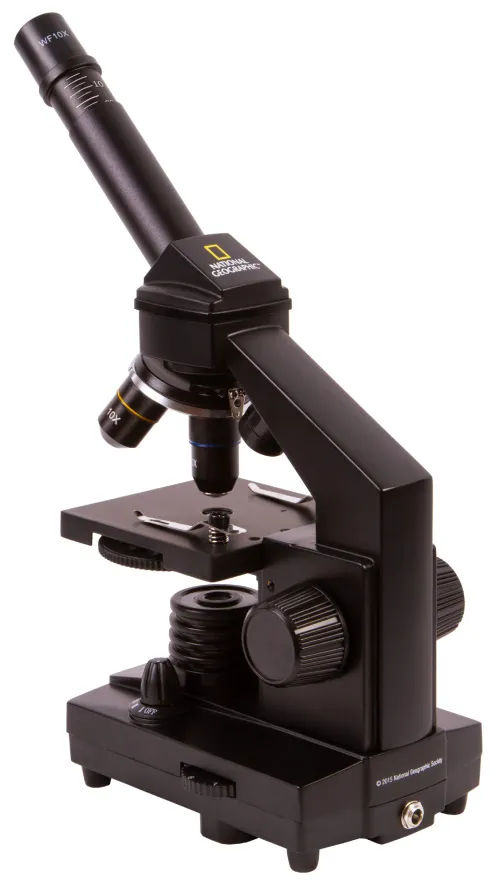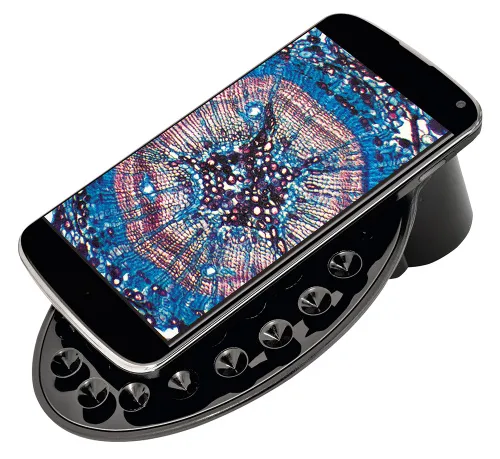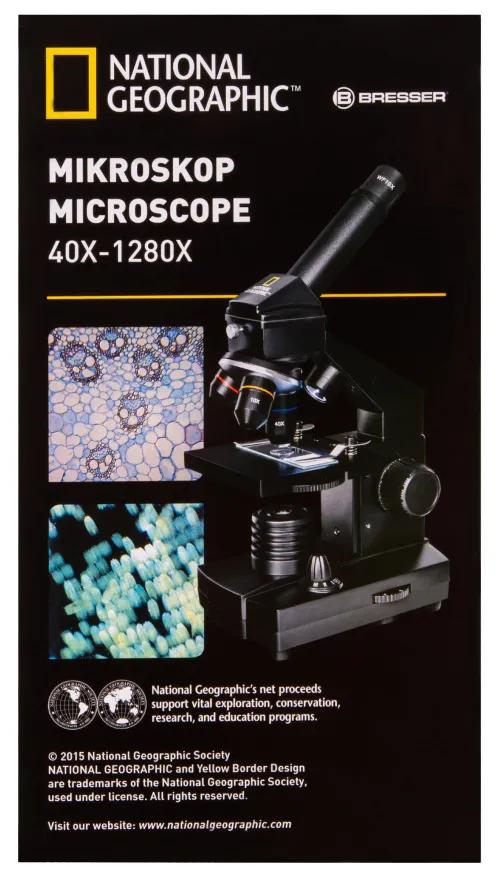Bresser National Geographic 40x–1280x Microscope with Smartphone Holder
Monocular biological microscope. Magnification: 40x–1280x
| Product ID | 72351 |
| Brand | Bresser GmbH, Germany |
| Warranty | 2 years |
| EAN | 4007922032702 |
| Package size (LxWxH) | 30x17x16 cm |
| Shipping Weight | 1.6 kg |
Bresser National Geographic 40x–1280x Microscope is a wonderful entry-level microscope with a smartphone holder. It will become a great companion in studies or hobby. This modern microscope features combined illumination that allows for observing both transparent and opaque samples in reflected and transmitted light. Due to a special smartphone holder, you will be able to observe samples on a smartphone screen and take photos. Capture your research and save pictures on your smartphone. A wide magnification range (40x–1280x) is convenient for biological studies and observing versatile samples.
Bresser National Geographic 40x–1280x Microscope comes with a rich kit of accessories: two eyepieces, a Barlow lens, prepared microscope slides, a hatchery, forceps, a dropper, and a smartphone holder. You will also find blank microscope slides for preparing your own samples. All the steps of each experiment are explained in detail in the user guide. The kit includes everything a beginner microbiologist might need to start observations immediately.
Features:
- Combined illumination (both reflected and transmitted light are used)
- A wide magnification range: 40–1280x
- A smartphone holder for observing and taking photos
- Extensive set of additional accessories
The kit includes:
- Eyepieces: 10X WF; 16X WF
- 2x Barlow lens
- Power cable
- Plastic box with 5 blank slides, 10 cover plates, 5 prepared slides
- Dropper
- Forceps
- Hatchery
- MicroCut
- Specimen (yeast, gum media, sea salt, shrimp eggs)
- Smartphone holder
| Product ID | 72351 |
| Brand | Bresser GmbH, Germany |
| Warranty | 2 years |
| EAN | 4007922032702 |
| Package size (LxWxH) | 30x17x16 cm |
| Shipping Weight | 1.6 kg |
| Type | biological |
| Microscope head type | monocular |
| Magnification, x | 40 — 1280 |
| Illumination | LED |
| User level | beginners |
| Application | elementary, school/educational |
| Illumination location | dual |
| Research method | bright field |
| Experiment kit included | ✓ |
| Pouch/case/bag in set | dust cover |
We have gathered answers to the most frequently asked questions to help you sort things out
Find out why studying eyes under a microscope is entertaining; how insects’ and arachnids’ eyes differ and what the best way is to observe such an interesting specimen
Read this review to learn how to observe human hair, what different hair looks like under a microscope and what magnification is required for observations
Learn what a numerical aperture is and how to choose a suitable objective lens for your microscope here
Learn what a spider looks like under microscope, when the best time is to take photos of it, how to study it properly at magnification and more interesting facts about observing insects and arachnids
This review for beginner explorers of the micro world introduces you to the optical, illuminating and mechanical parts of a microscope and their functions
Short article about Paramecium caudatum - a microorganism that is interesting to observe through any microscope

